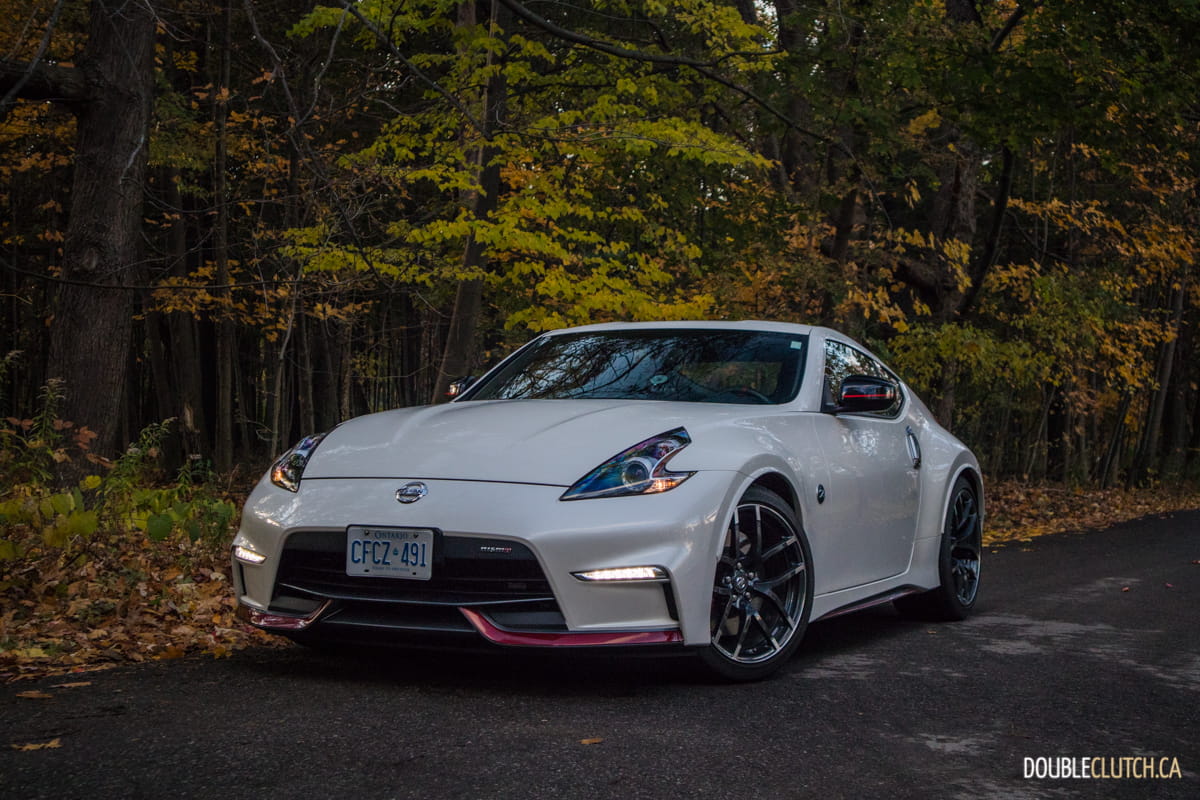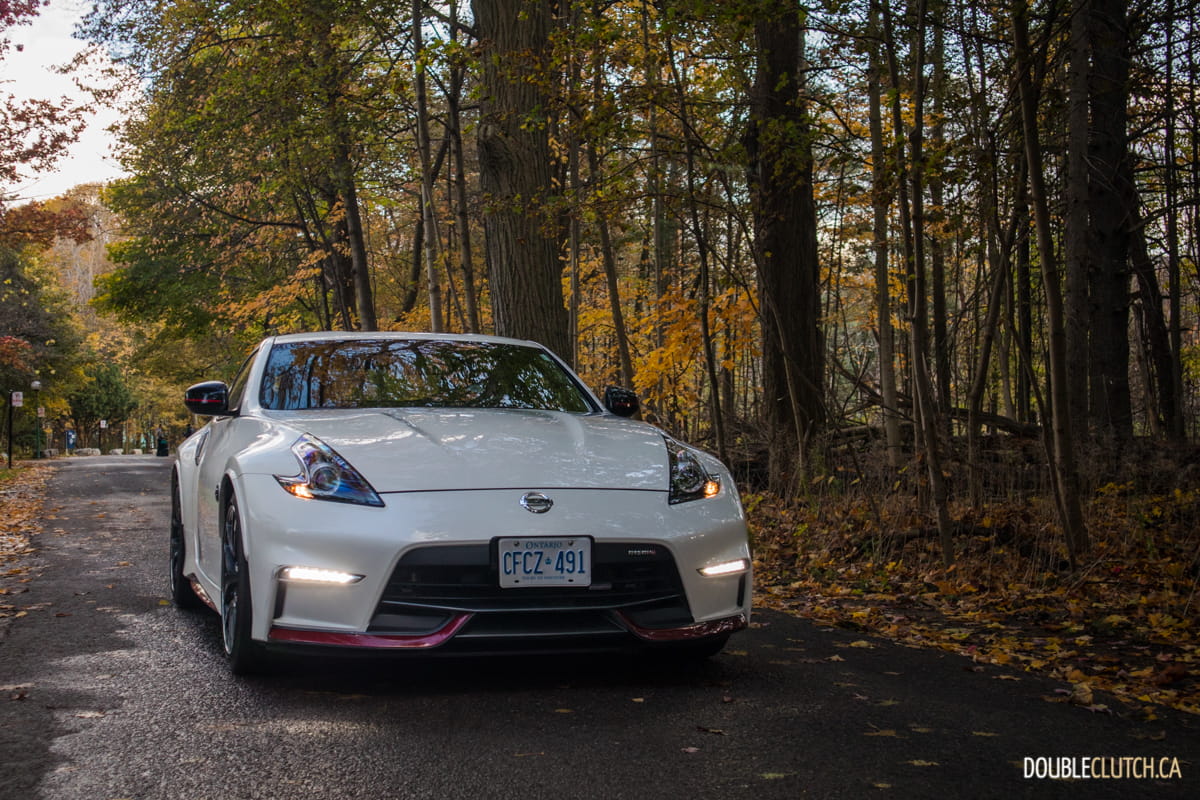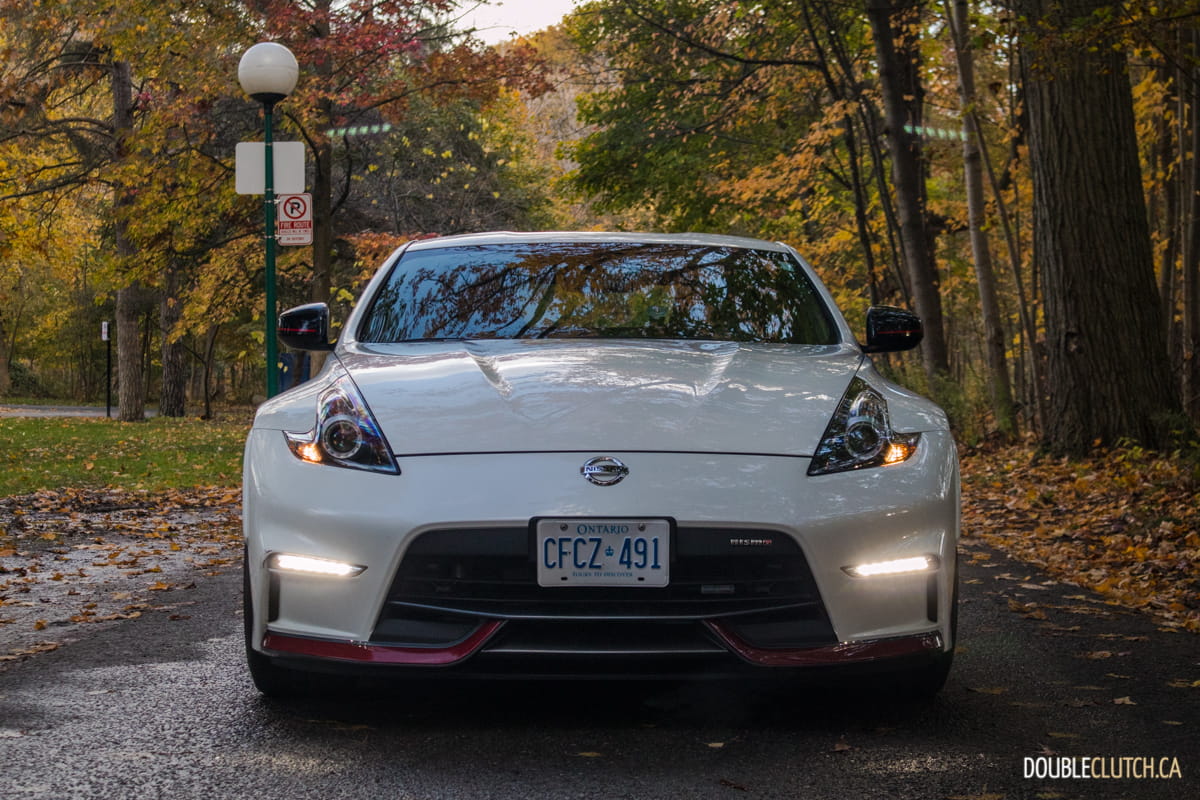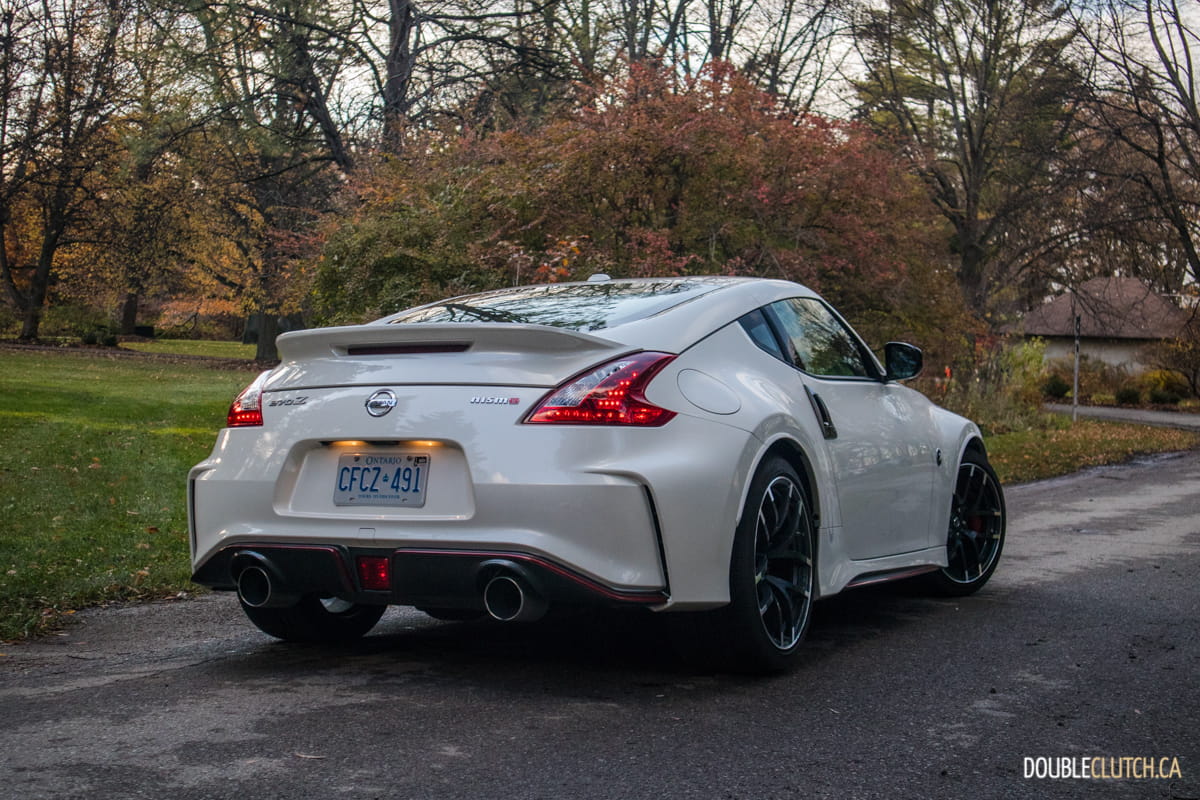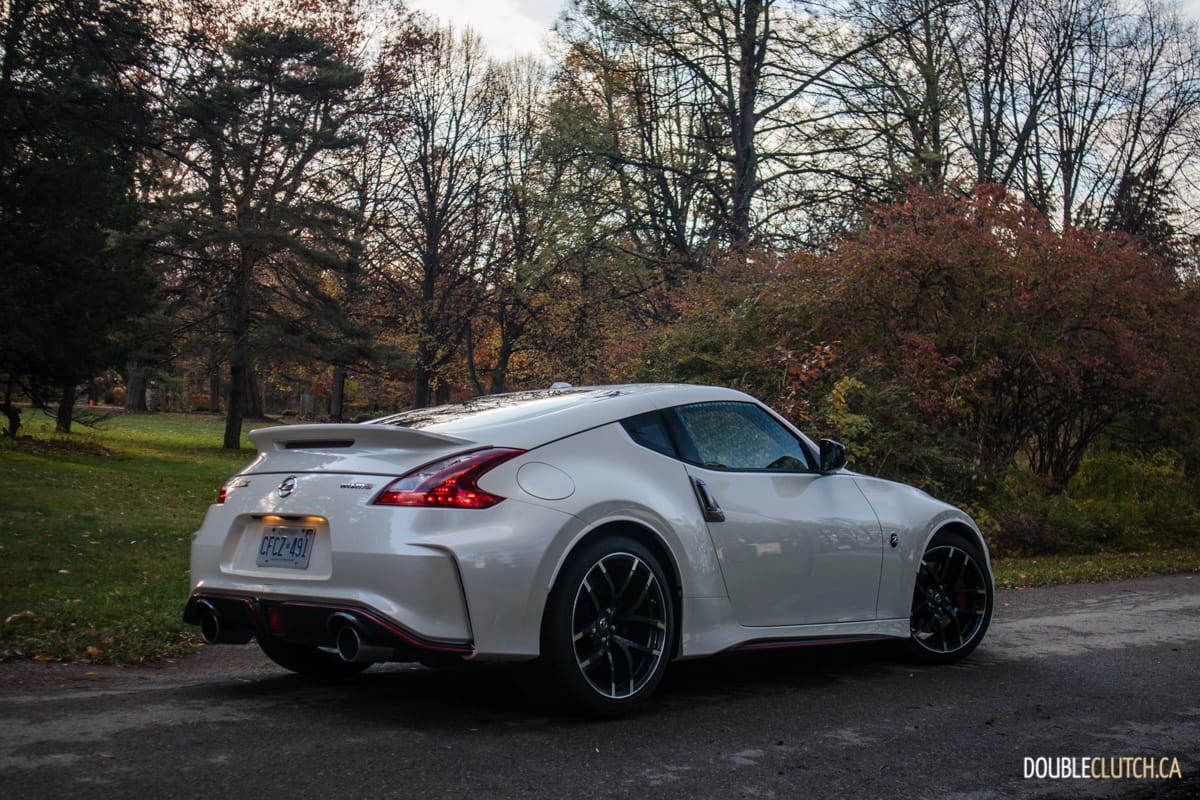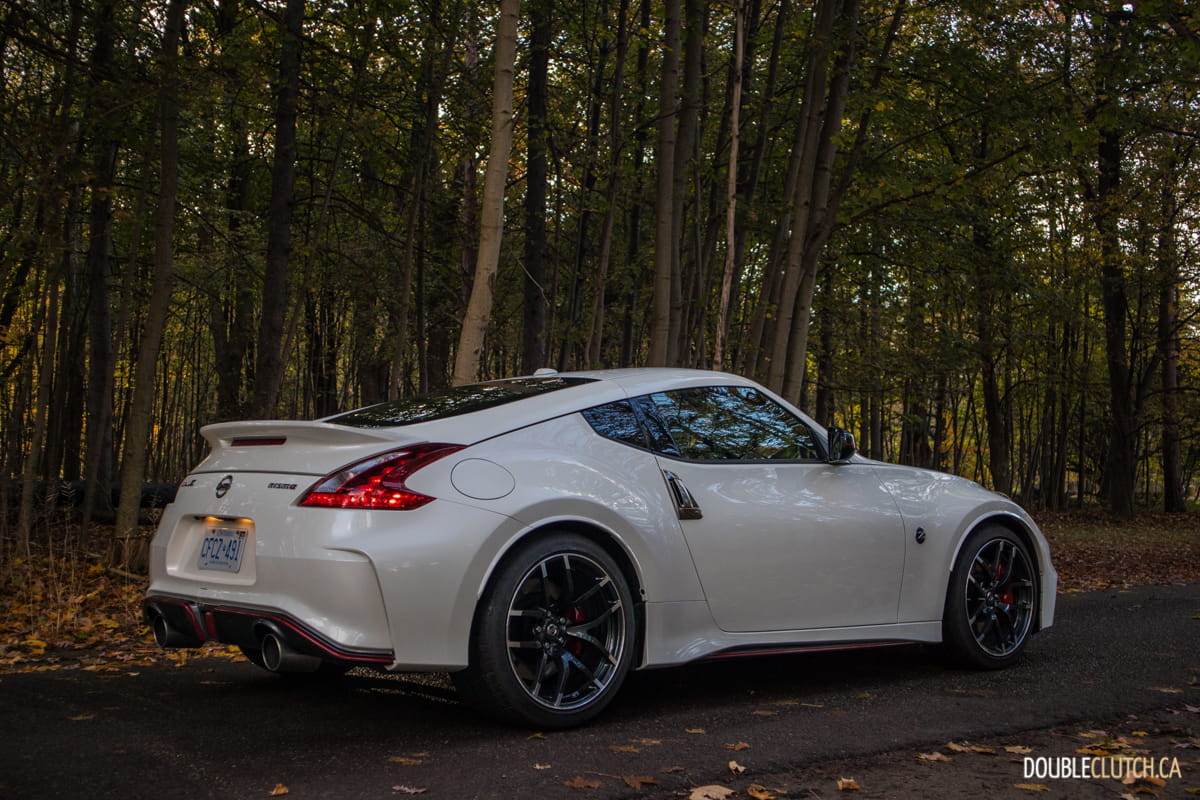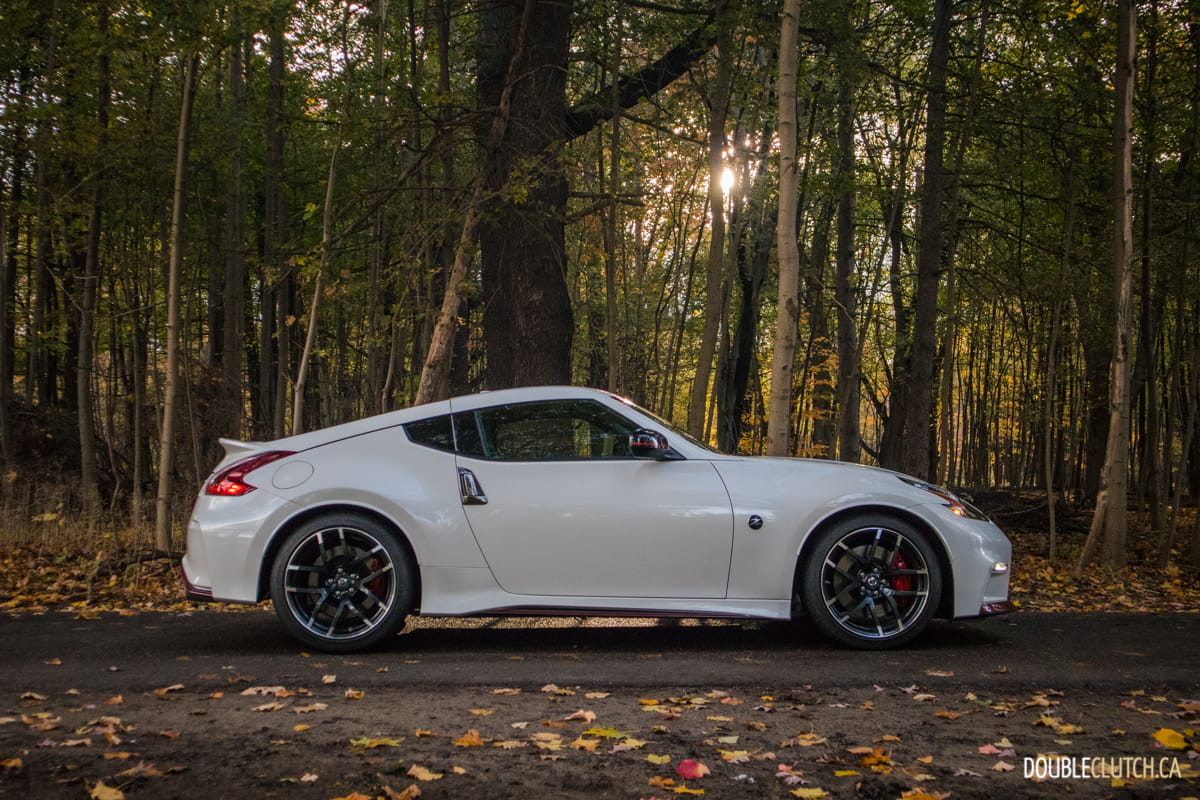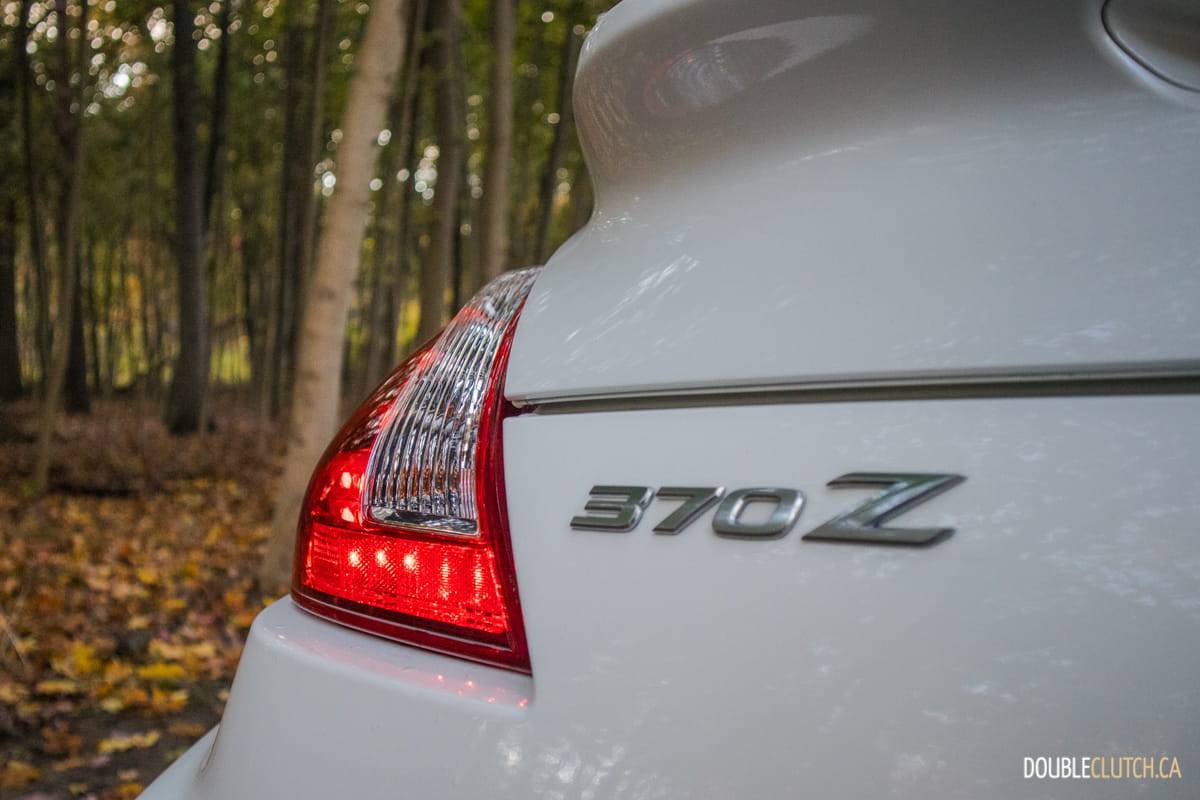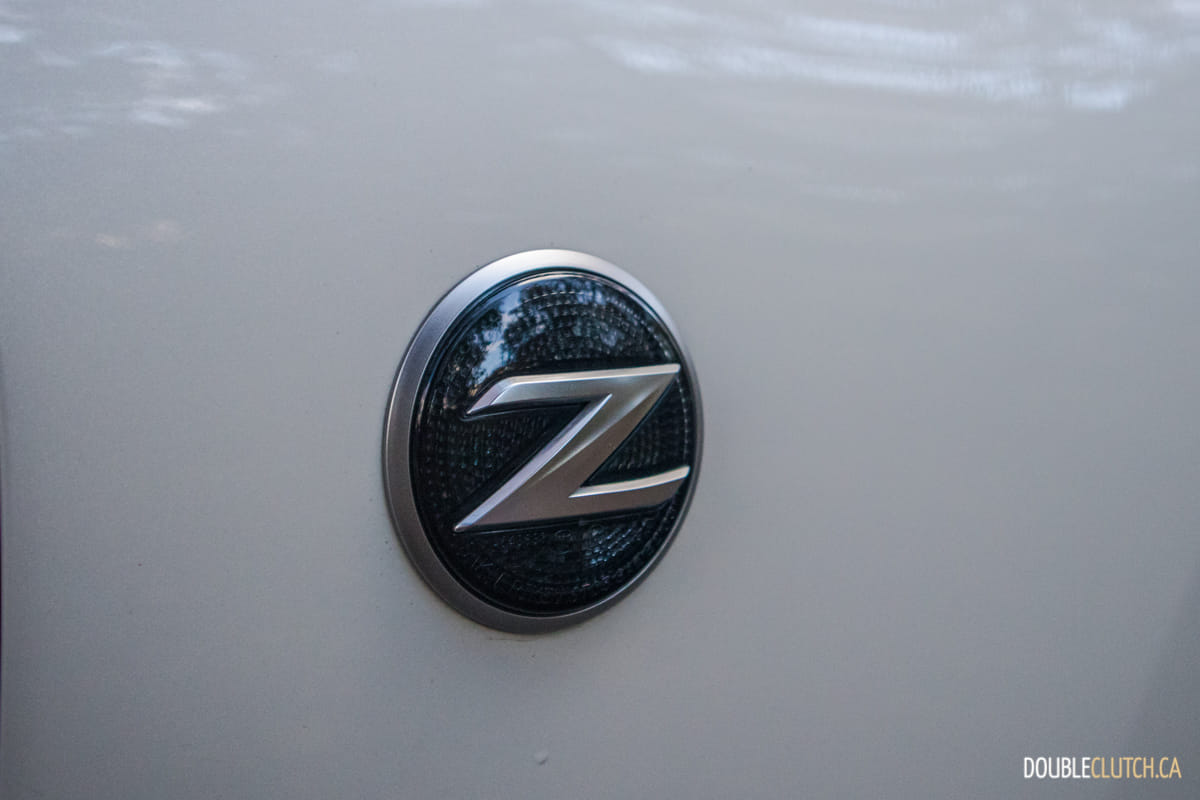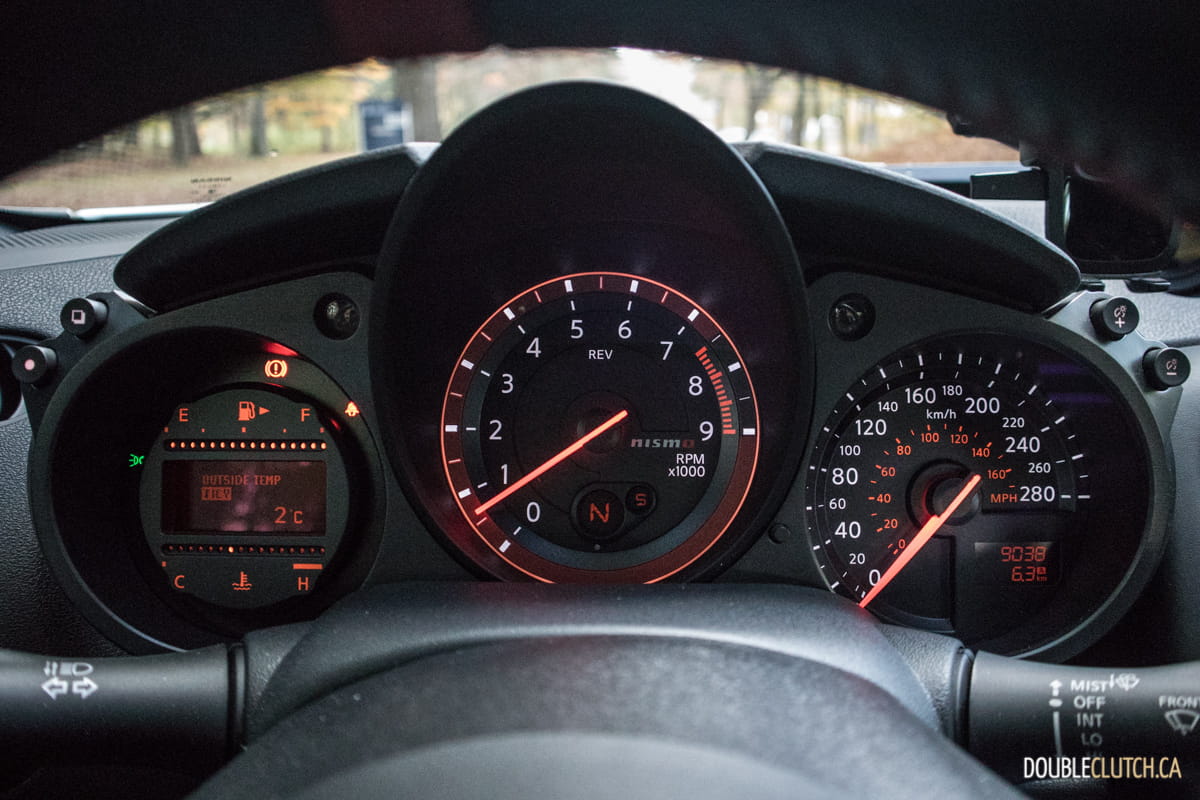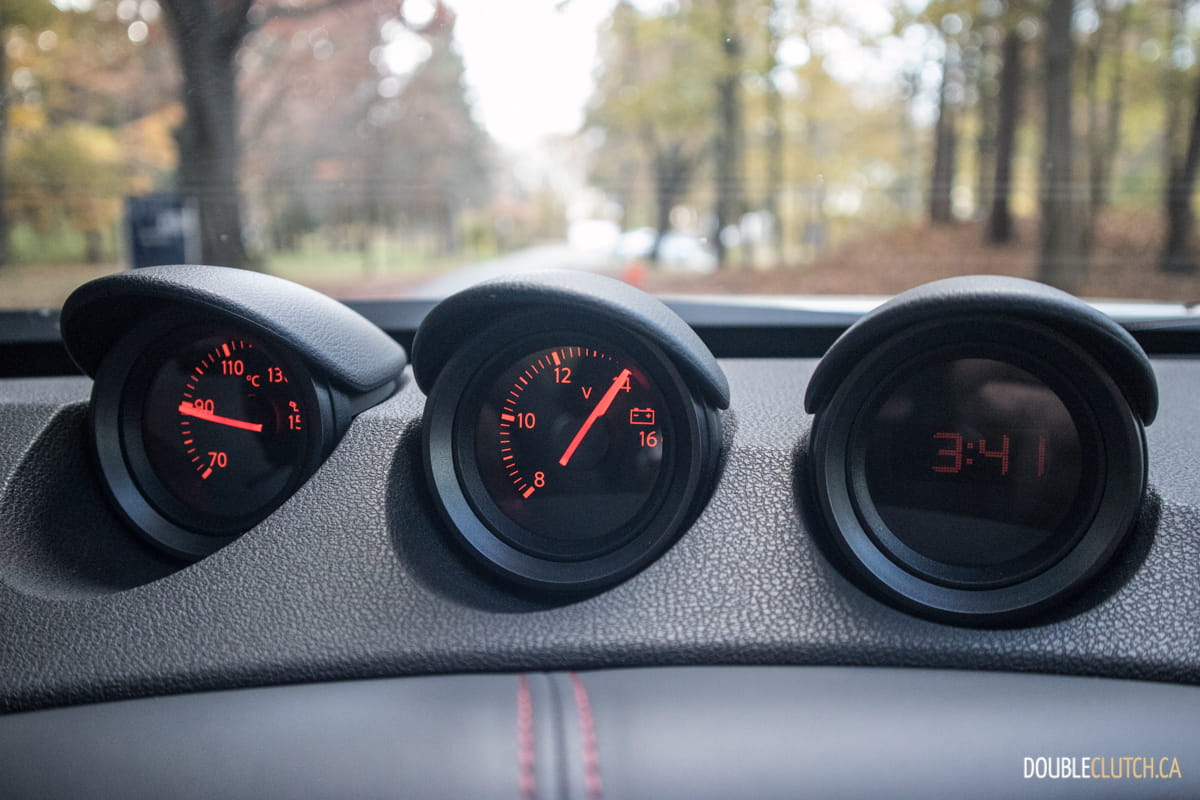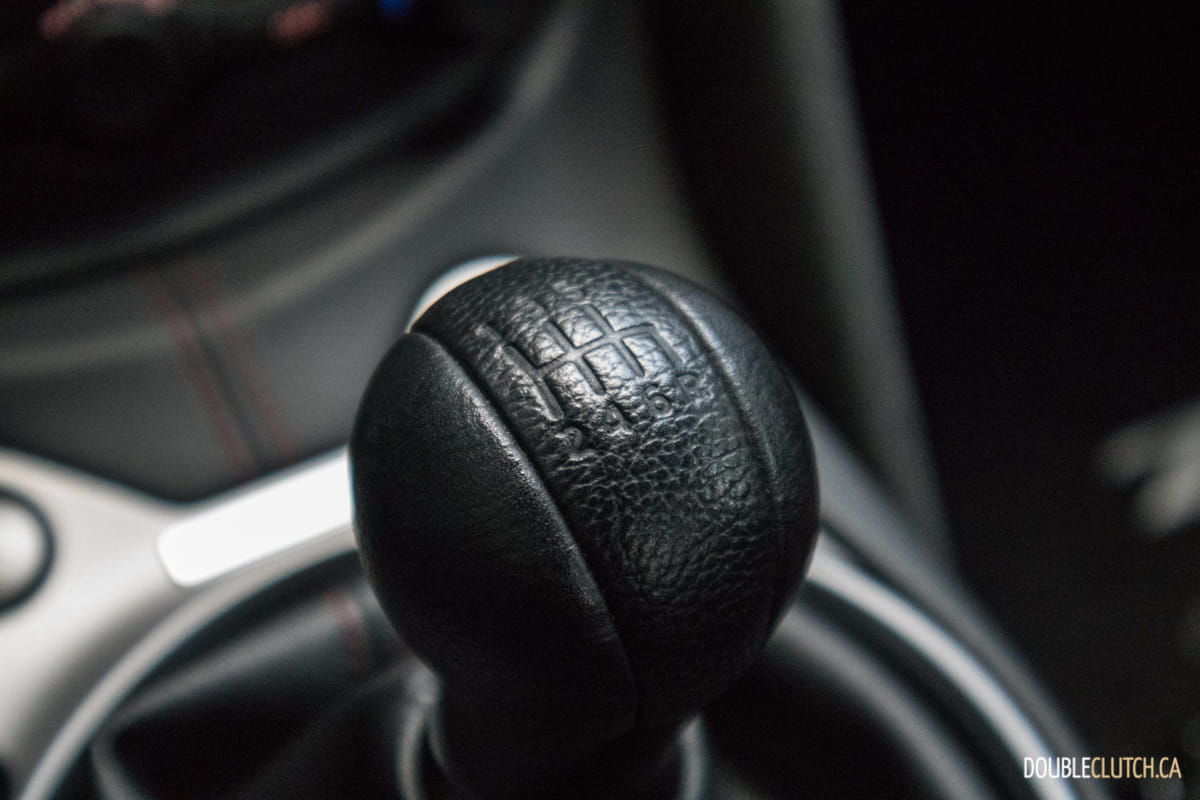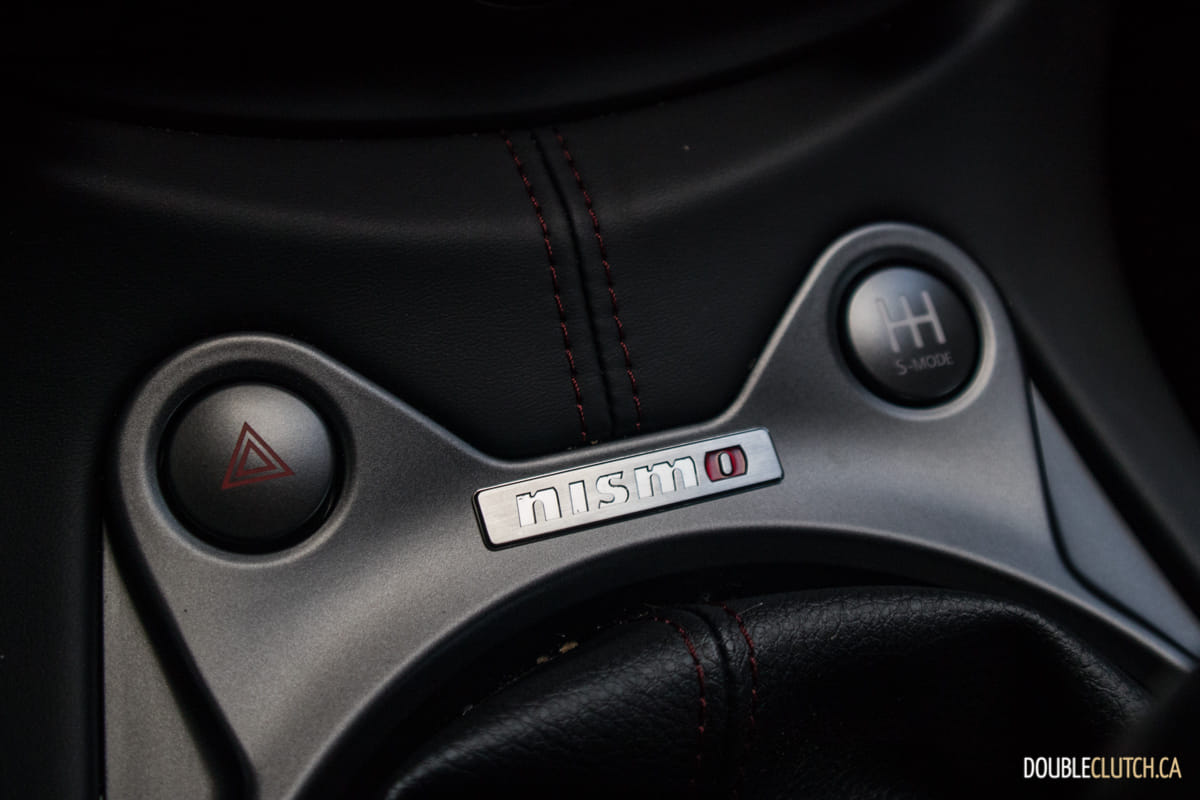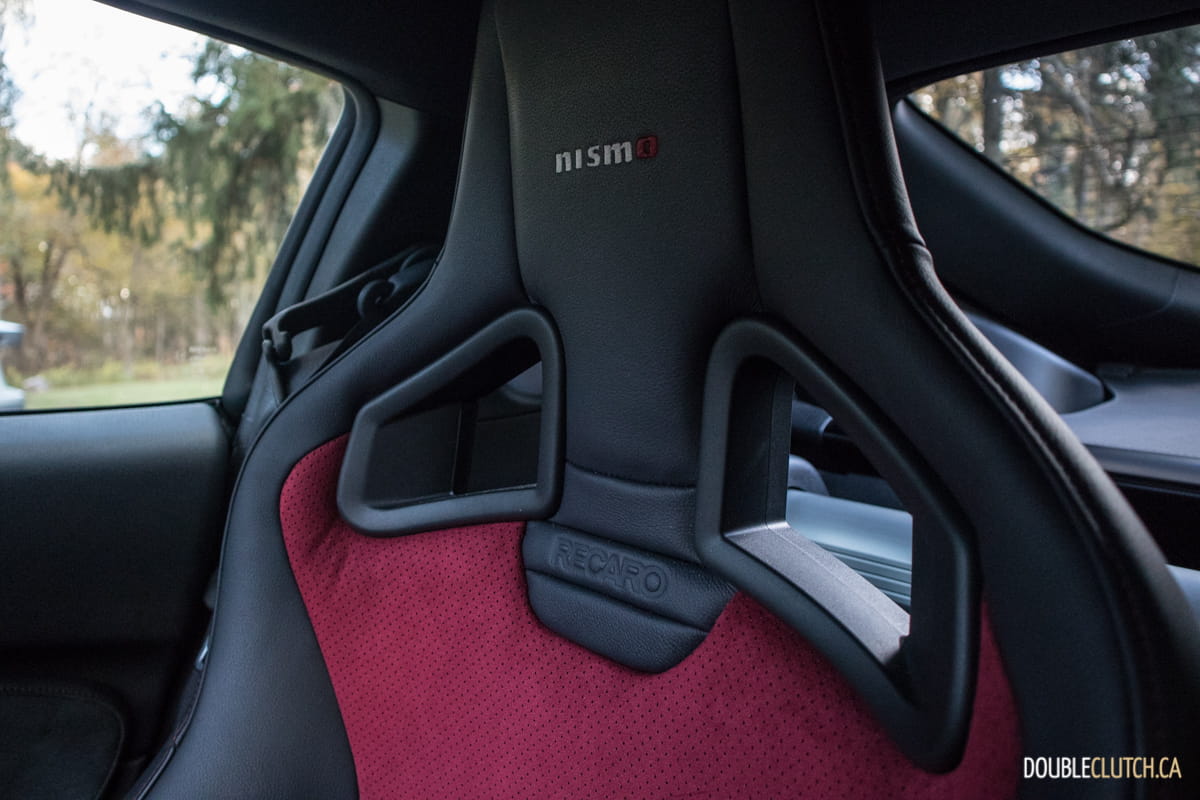The Nissan 370Z, in any iteration, just might be one of the purest sports cars currently available to North Americans. While the Z has been the subject of much justified criticism about its lack of changes for a decade, this has started to work in the car’s favour. When the 370Z was first introduced in the late 2000s, it had company. There were plenty of hot coupés available with naturally aspirated six-cylinder engines and manual transmissions. Other automakers such as Honda, Hyundai and even Toyota have since dropped out of this game in favour of more crossovers, making Nissan a bit of an anomaly. We spent a week with a 2020 Nissan 370Z NISMO, the top dog of the line, to see how this model stacks up against competition.
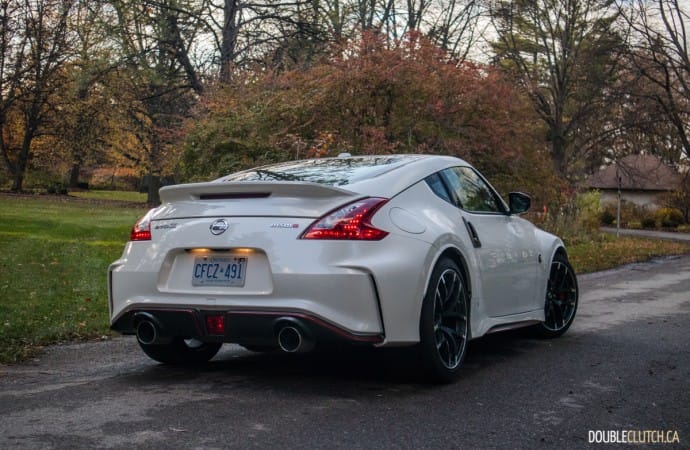
And that’s just it – competition – the 370Z is almost alone. While other sports cars at its price point offer other degrees of performance and value, the only true competitor to the NISMO model tested here is Chevrolet’s Camaro V6. Like the 370Z, it’s also available with a naturally aspirated six-cylinder, a track pack, rear-drive setup, and a manual transmission. We racked our collective brains pretty hard – there is nothing else in this league currently. The 370Z’s decade-old styling has aged fairly well; the diehard Z fans at our office wouldn’t stop remarking how good the car still looks. It’s a valid point too; given the car’s age, it still looks pretty darn fresh.
The interior though, is a different story. This is the single biggest weakness of the car and one Nissan really should have addressed halfway through the car’s model cycle. The two-tone Recaro buckets look fairly nice, the driving position is good, and most commonly-used controls are within reach of the driver. But that’s where it ends; the infotainment is archaeic and dates back to the 2004 Maxima, there are plenty of hard plastics, no Apple CarPlay or Android Auto, no heated seats (which is a bold omission at a near-$50,000 price point), and the steering wheel doesn’t telescope.
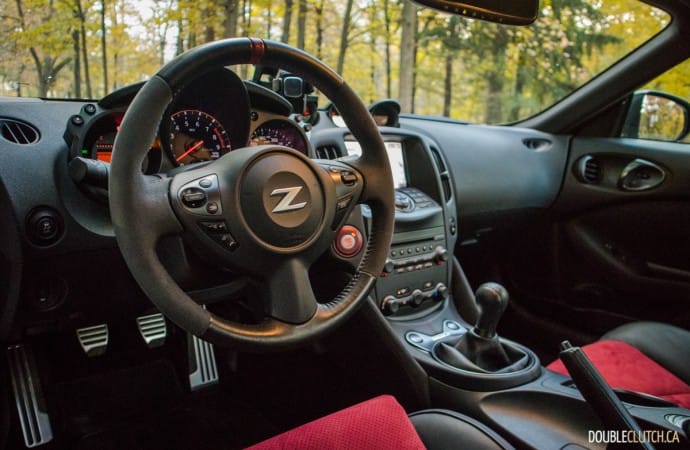
Once you’ve settled into the interior and are finished grumbling about how old it feels, push the engine start button; this might change your mind. The 3.7-liter VQ-series naturally aspirated V6 won a countless number of awards in its heyday, and continues to deliver excitement. It pushes 350 horsepower and 276 lb-ft. of torque, screaming all the way to a redline of 7,500RPM. This is what a sports car should feel like, and this is an engine that has genuine personality. In a world where we are dominated by small-displacement turbocharged four-cylinders, this VQ V6 is a roaring reminder of what purists have been begging for.
A six-speed manual transmission only adds to the engagement, and while some will argue about this feature, Nissan’s SynchroRev Match system will perfectly match revs between gear changes, on both up and downshifts. While the shifter is a bit on the notchy and tedious side, the clutch engagement is good and I found the rev-match system making my life a lot easier in rush hour commuting situations. If you have too much pride to let the transmission match revs for you, a button just ahead of the shifter can disable this system.
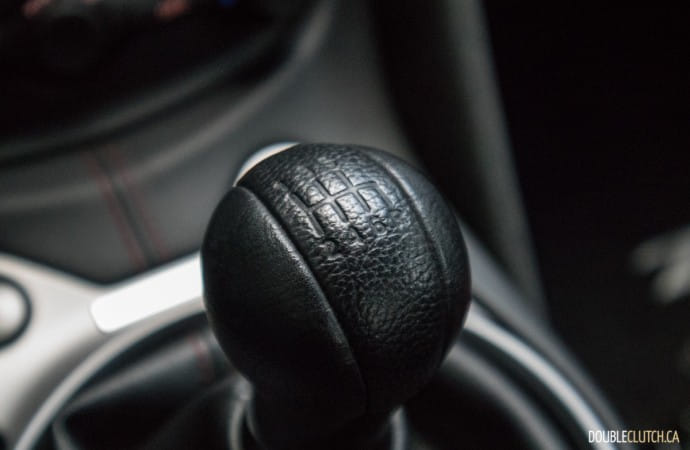
Another huge bonus that the 370Z retains is the hydraulic steering. The power-assisted hydraulic steering means the rack is heavier than a newer electric system, but it also translates to much more precision and analog feedback into the driver’s fingertips. The 370Z goes exactly where pointed, and should you decide to give it some additional throttle coming out of corners, the rear end will definitely induce oversteer. If you live somewhere with lots of curvy roads nearby, this car will keep a smile on your face every single day. By comparison, the current Mazda MX-5 (reviewed here) with its electrically assisted power steering has the driver engagement of a video game.
There is a price to pay for this level of enthusiast fun though, and that comes at the pumps. Nissan Canada provides a rating of 13.3L/100km city and 9.3L/100km highway. Our test consisted of extremely cold weather and a good chunk of city driving, averaging 12.9L/100km. The Z requires 91-octane premium fuel to operate properly, and the 72-liter tank is a sufficient size for the segment.
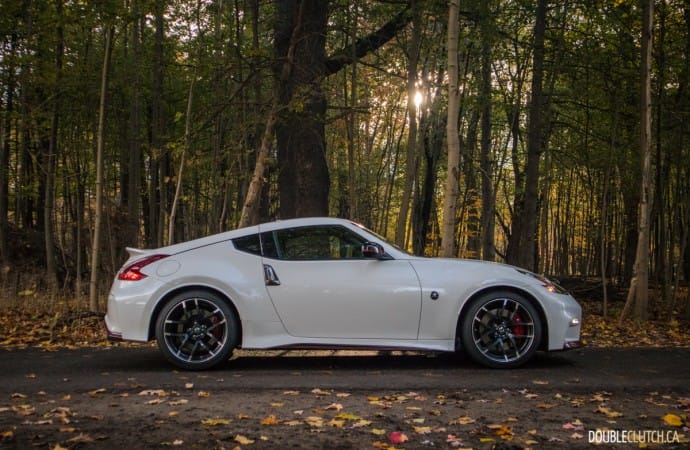
The NISMO model adds wider tires (285-width in the rear), huge brakes (14-inch front and 13.8-inch rear), and unique chassis dampers front and rear. The sport-tuned suspension is absolutely on the firm side, perhaps too firm for daily commuting, but ideal for track days. This does mean that on the street, especially during pothole season in Toronto, the 370Z NISMO has abysmal ride quality, but the tolerance for this is a very subjective thing. One of our colleagues spent a day at the local autocross circuit in a NISMO Z (reviewed here) last year, and came away with very positive impressions. My road test was exclusively on-road driving, and while the sporty bits are nice, the car is definitely tedious to endure while wearing a suit and taking conference calls over the hands-free Bluetooth.
Nissan prices the 370Z aggressively from $30,498, which makes it immensely cheap. At that price it still has the 3.7-liter V6, xenon headlights, and 18-inch wheels. Performance junkies will want to know that the base car does not have a limited-slip differential, which happens to be plentiful on the aftermarket. The NISMO, with its sport-tuned suspension, 19-inch RAYS forged alloys, and other performance goodies, comes only one way, and will set buyers back $48,998 before taxes and fees. No additional packages are available.
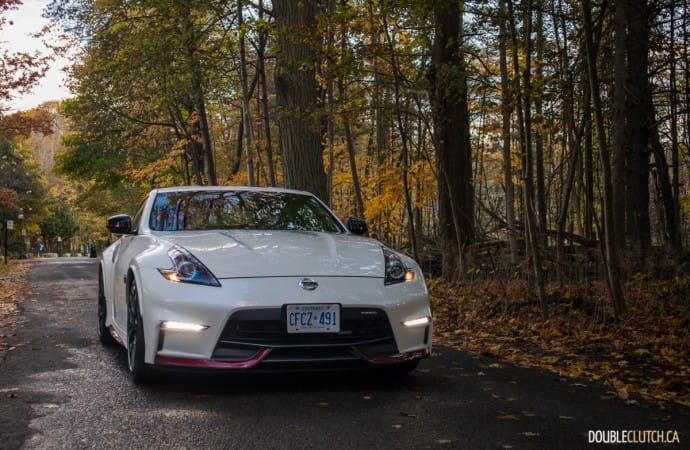
While the Chevrolet Camaro (reviewed here) is the only true competitor with regards to the drivetrain layout, other vehicles that play in the same ballpark include the Ford Mustang GT, Mazda MX-5 RF, and even hot hatches like the Ford Focus RS and Honda Civic Type R (reviewed here). You may have noticed that these rivals are fairly all over the place with regards to what they offer, but buyers in the performance segment below $50,000 tend to cross-shop a wide range of products that may differ significantly from one another.
No matter how you look at it, the 2020 Nissan 370Z NISMO is in a segment of its own today. Some have made tongue-in-cheek comments that Nissan has simply forgotten that they still make the Z while working on development of models like the Kicks (reviewed here) and Rogue, and while true, this works to the car’s advantage. If what you’re looking for is a raw performance car that communicates more analog feel than anything else at its price point, the 370Z is absolutely still relevant.
See Also:
2018 Nissan 370Z NISMO
2019 Chevrolet Camaro ZL1 Convertible
2019 Honda Civic Type R

